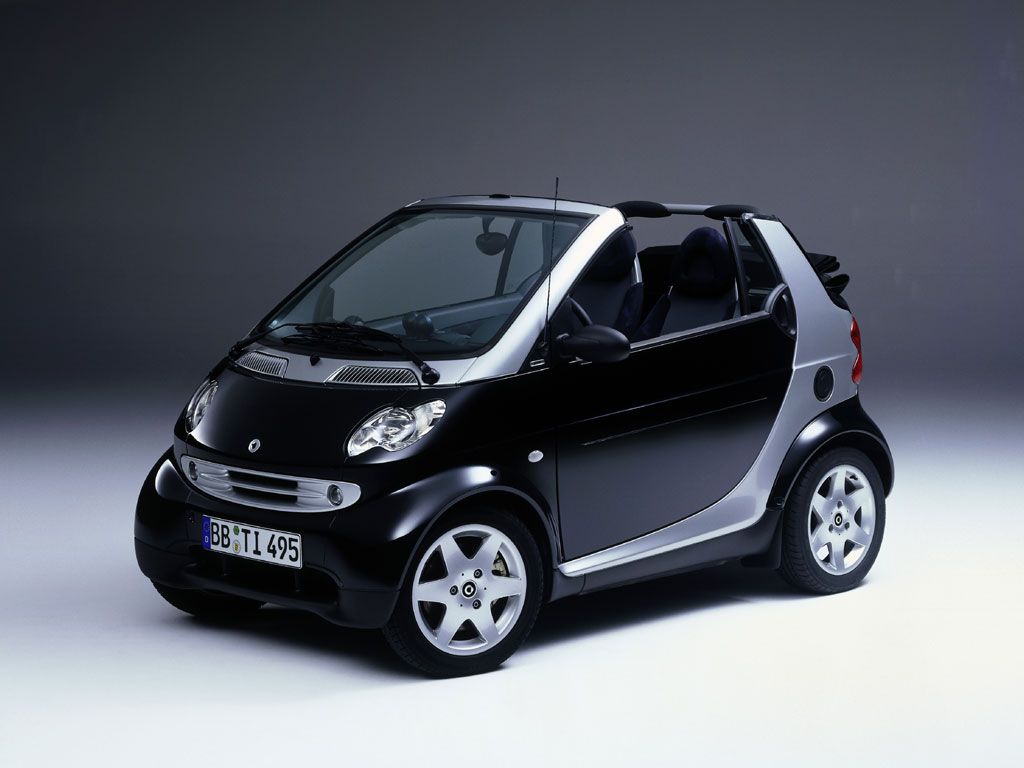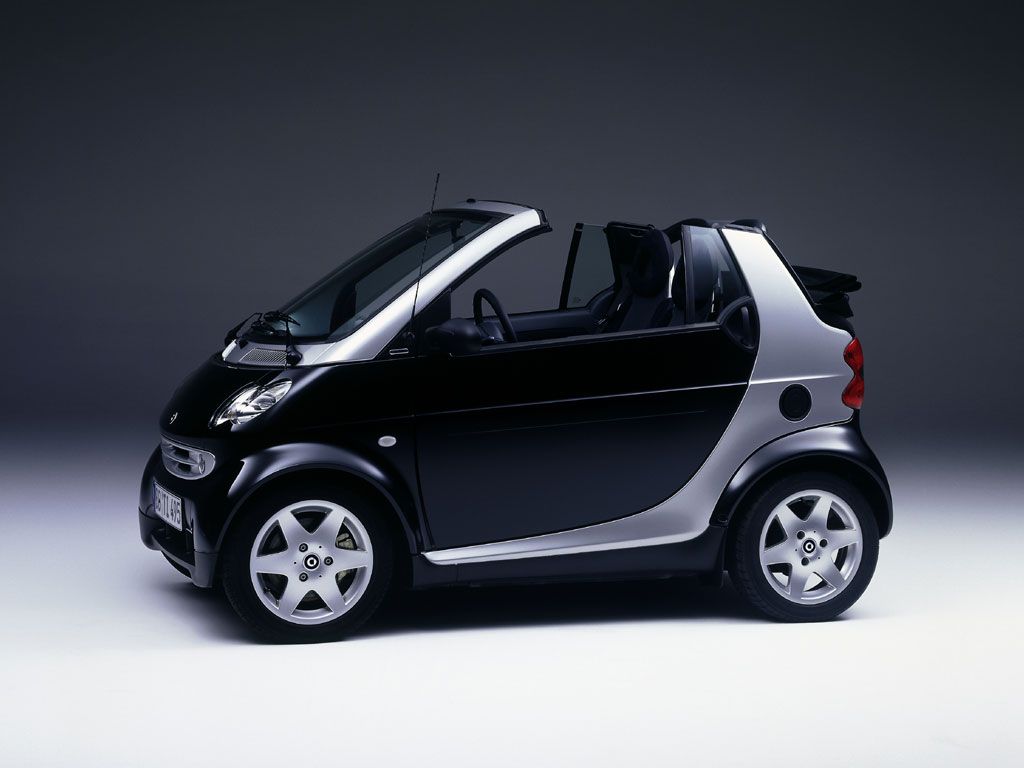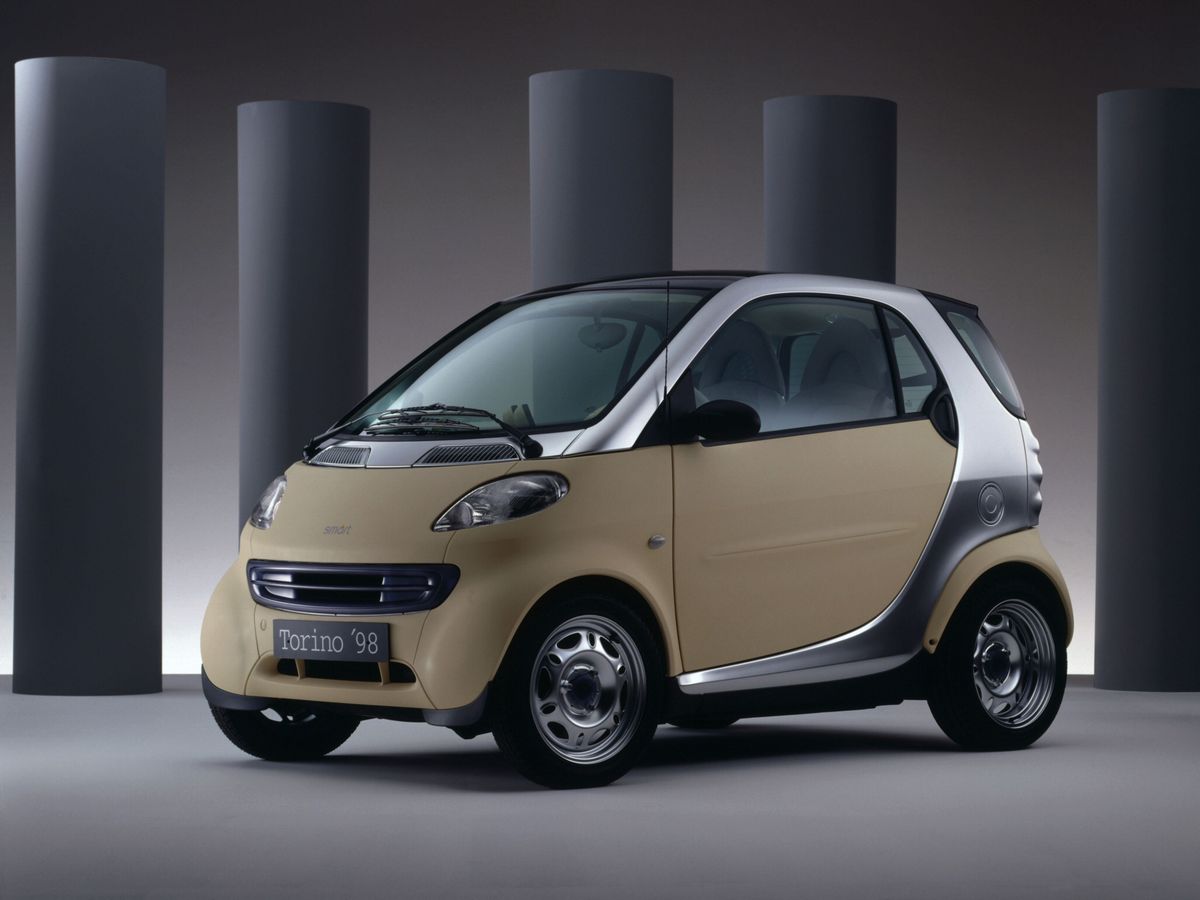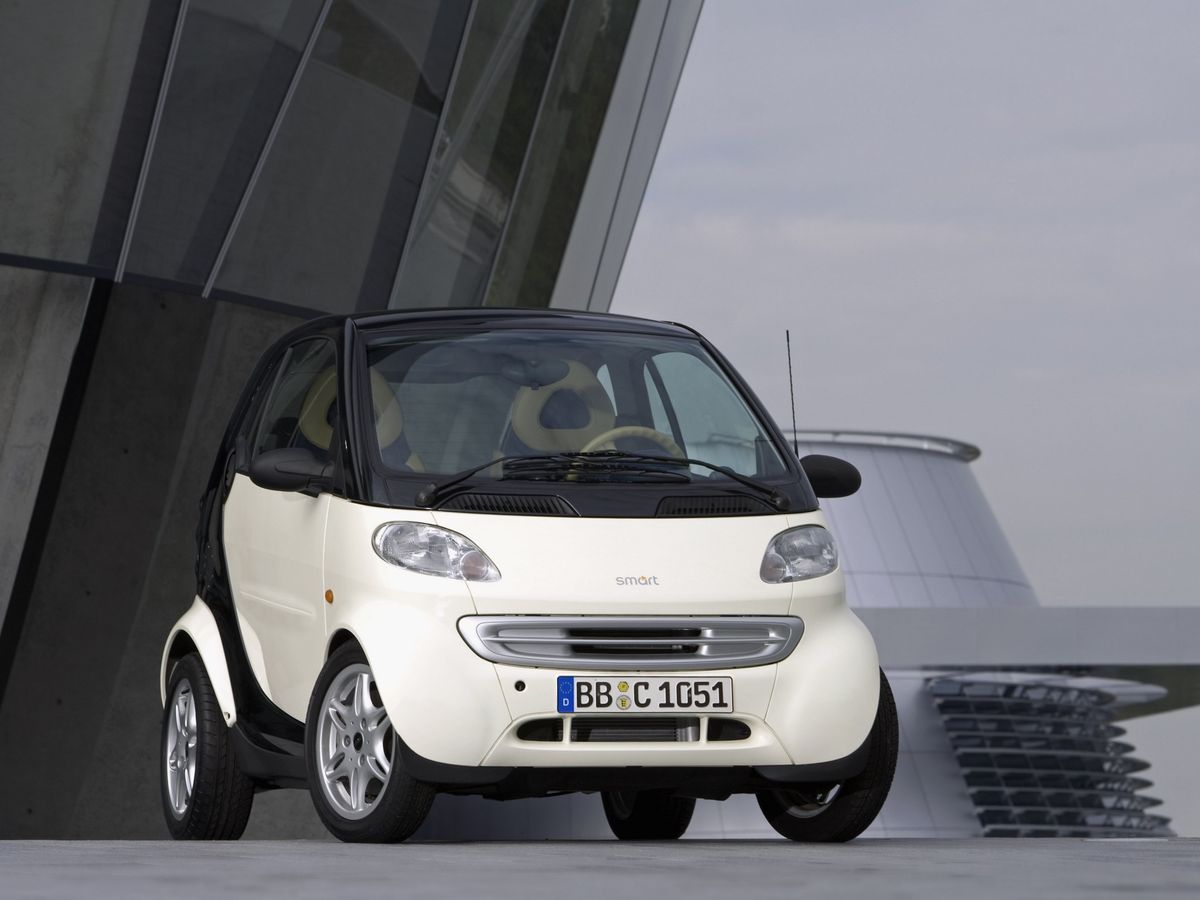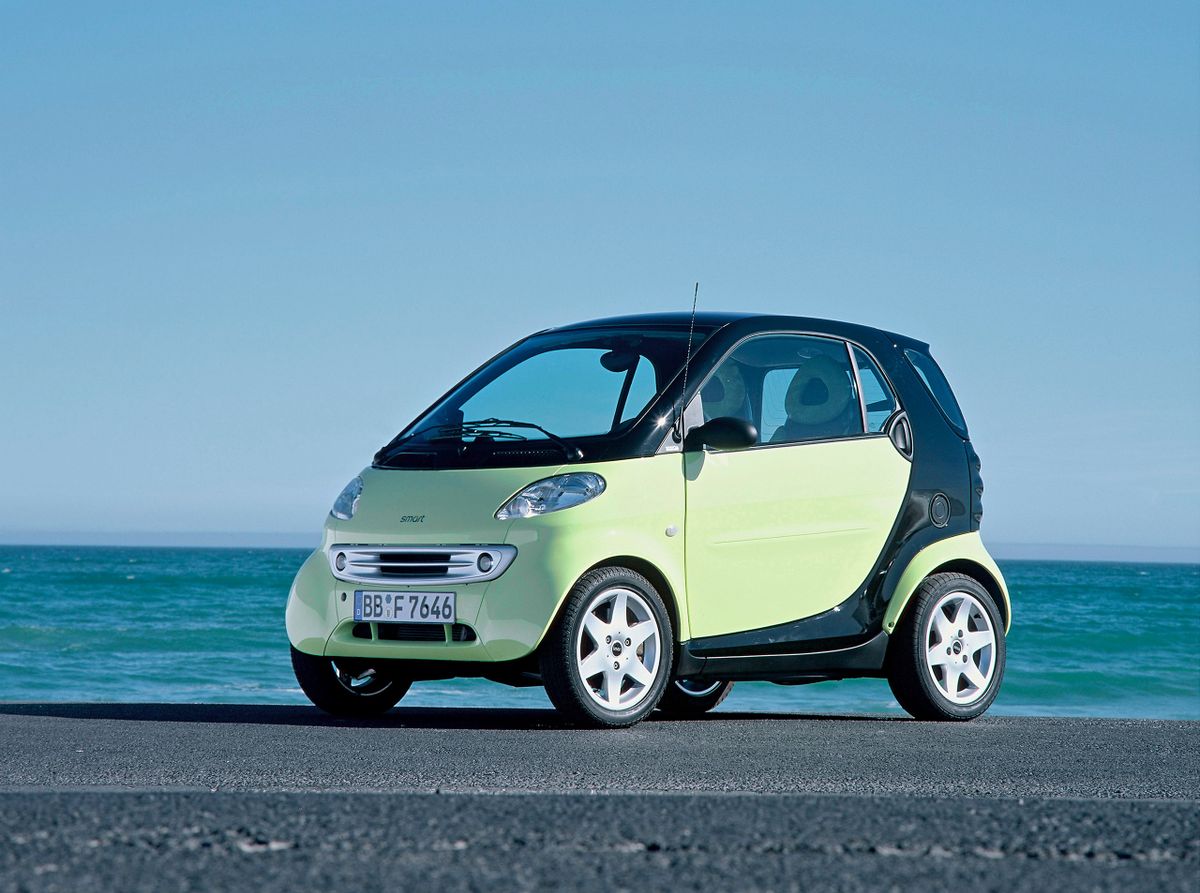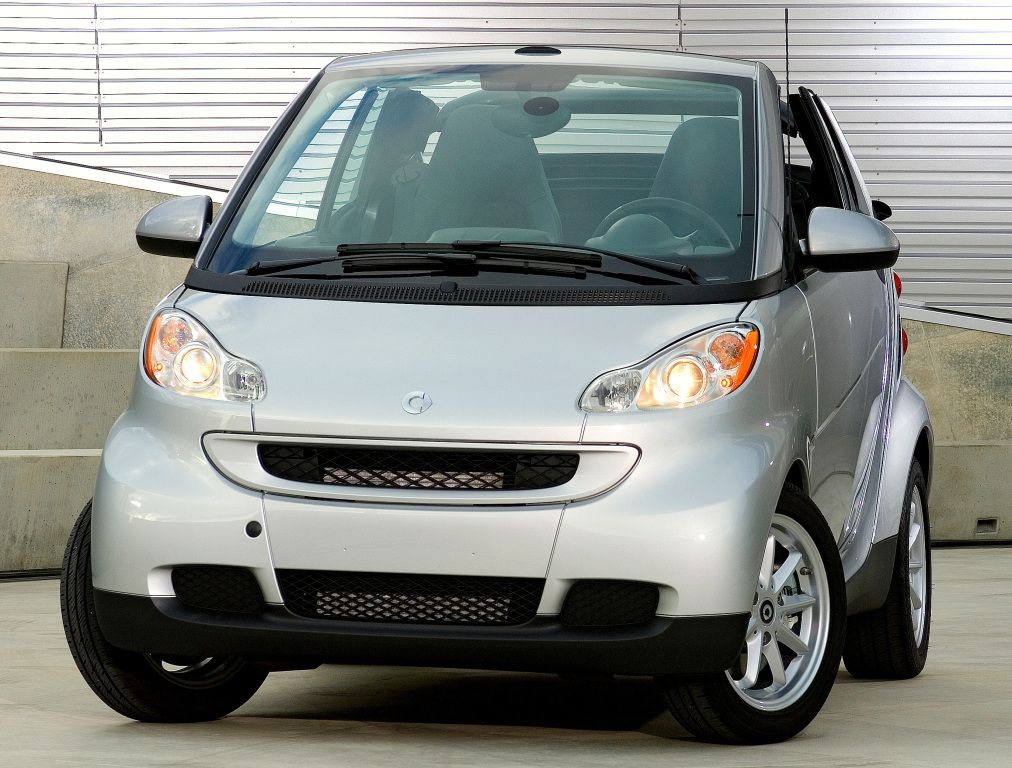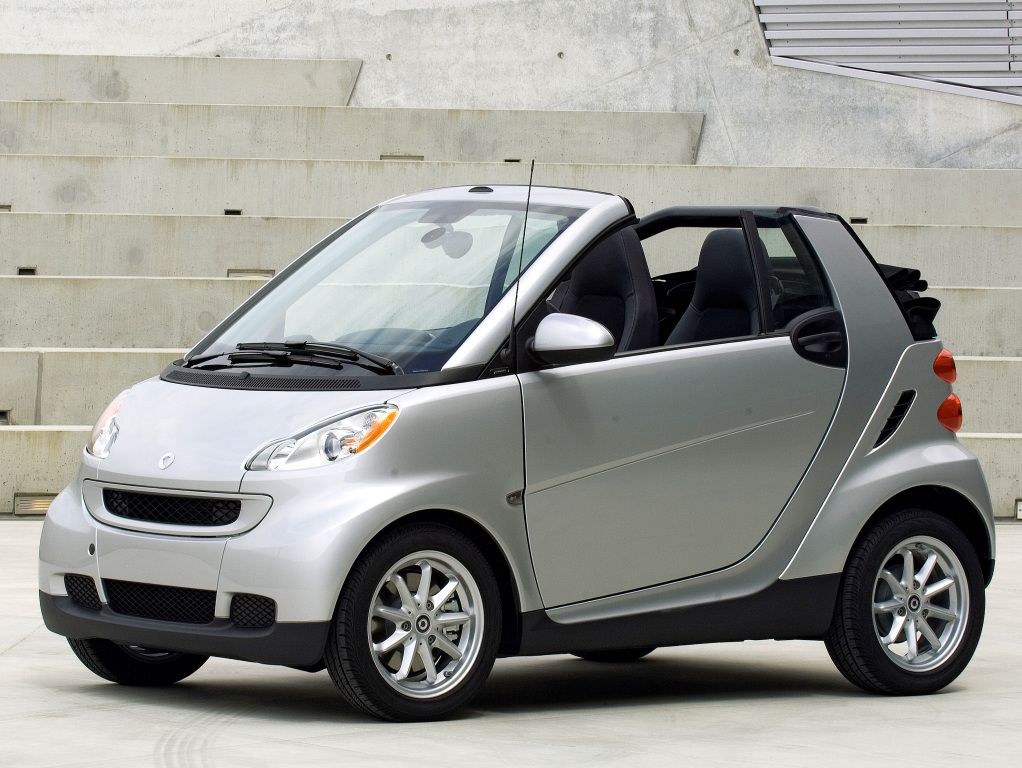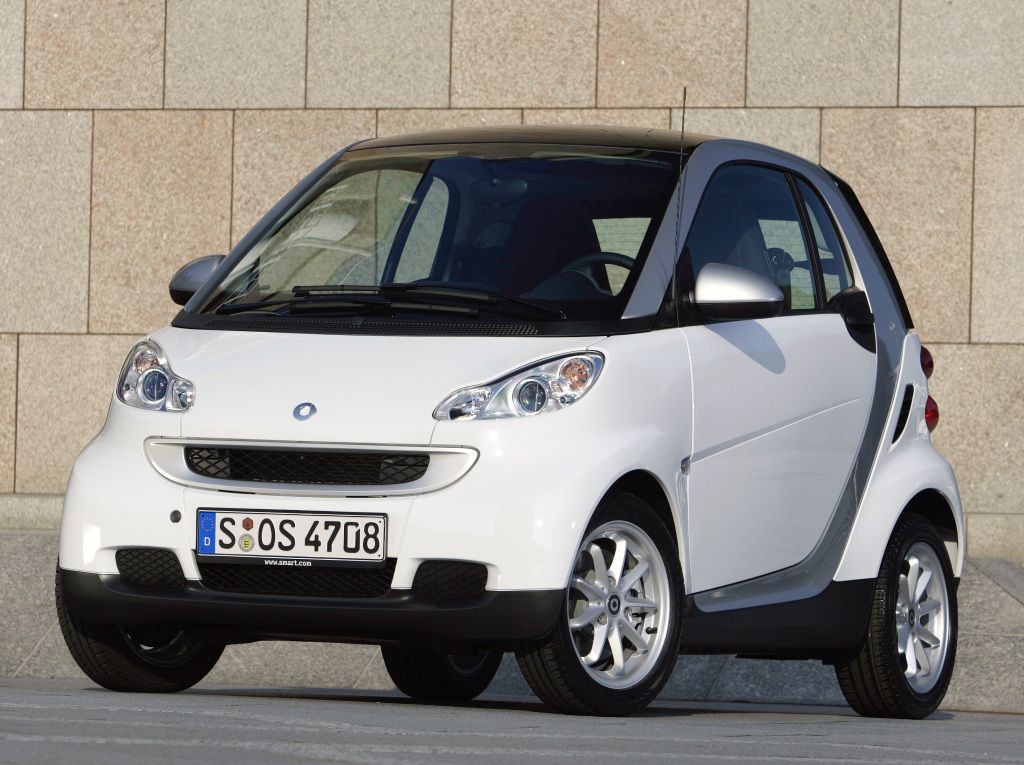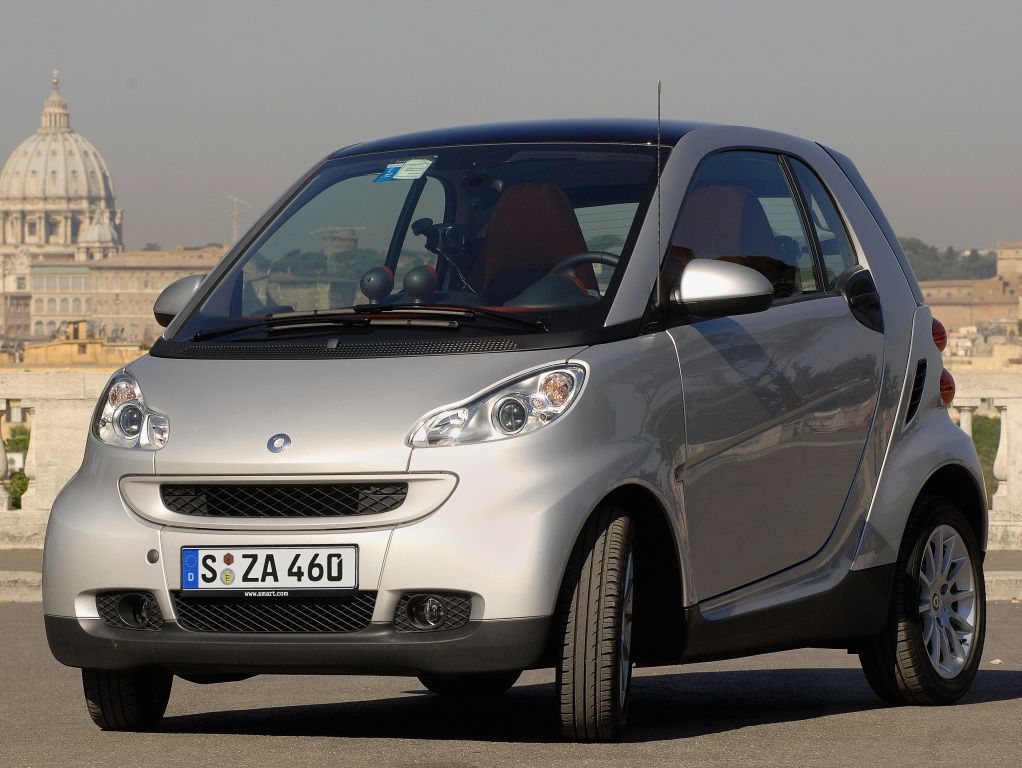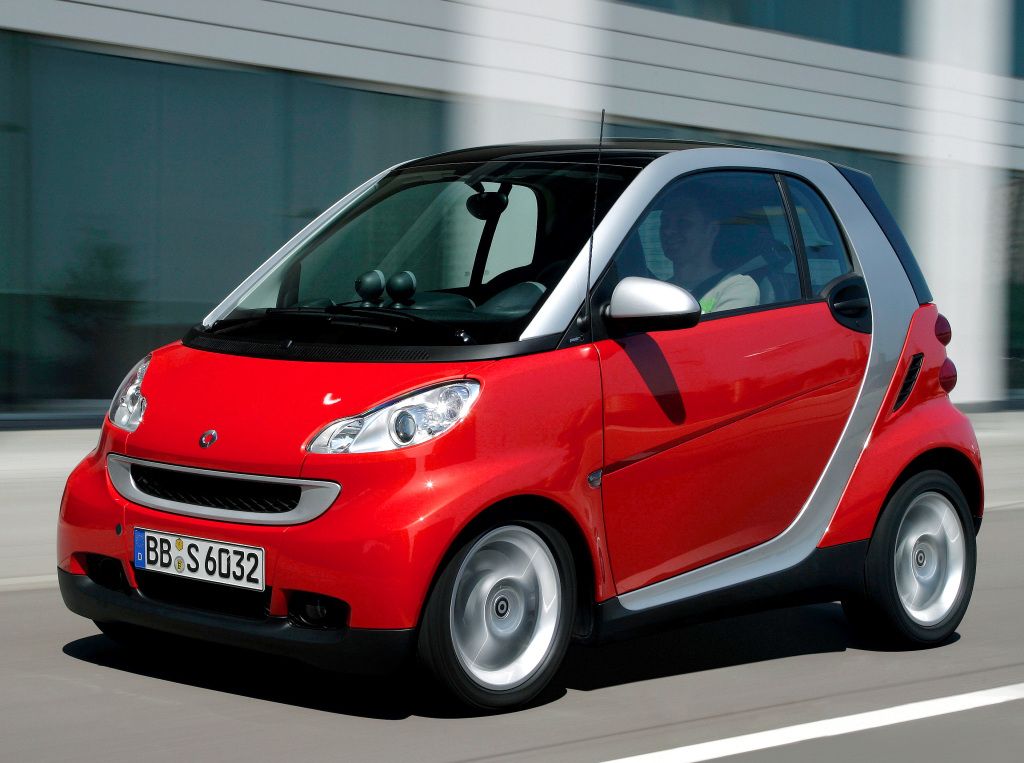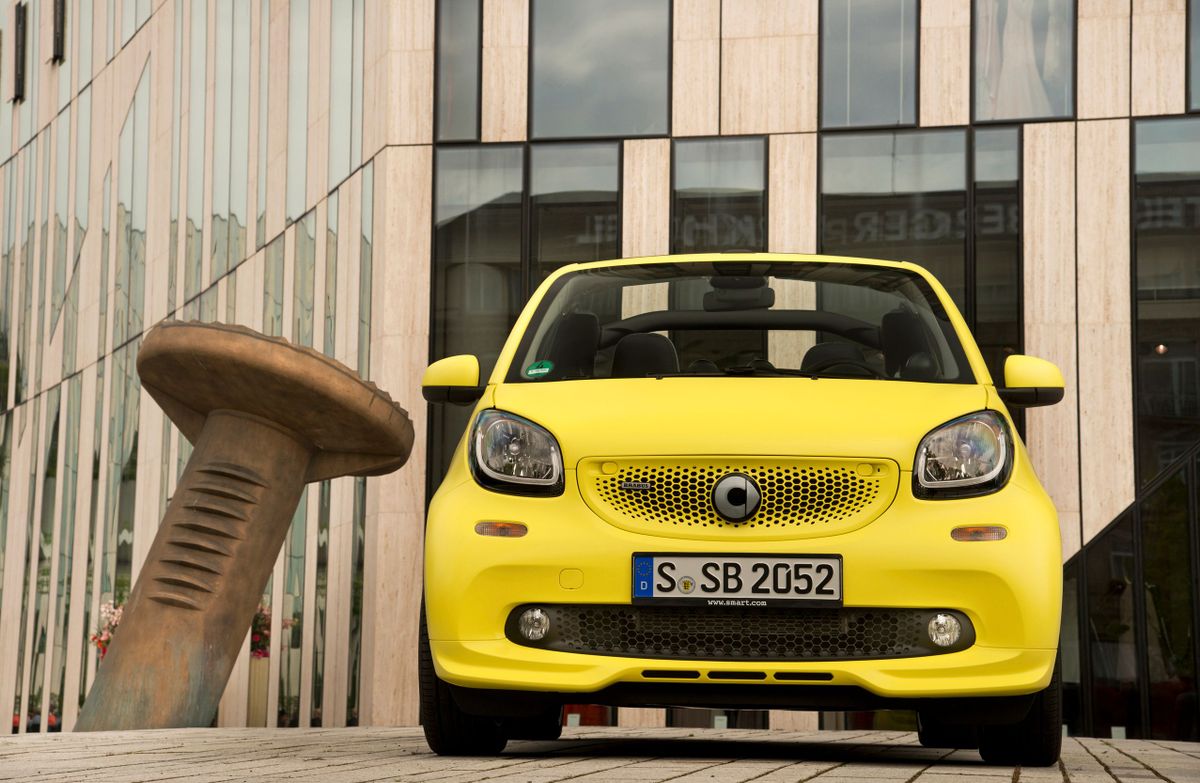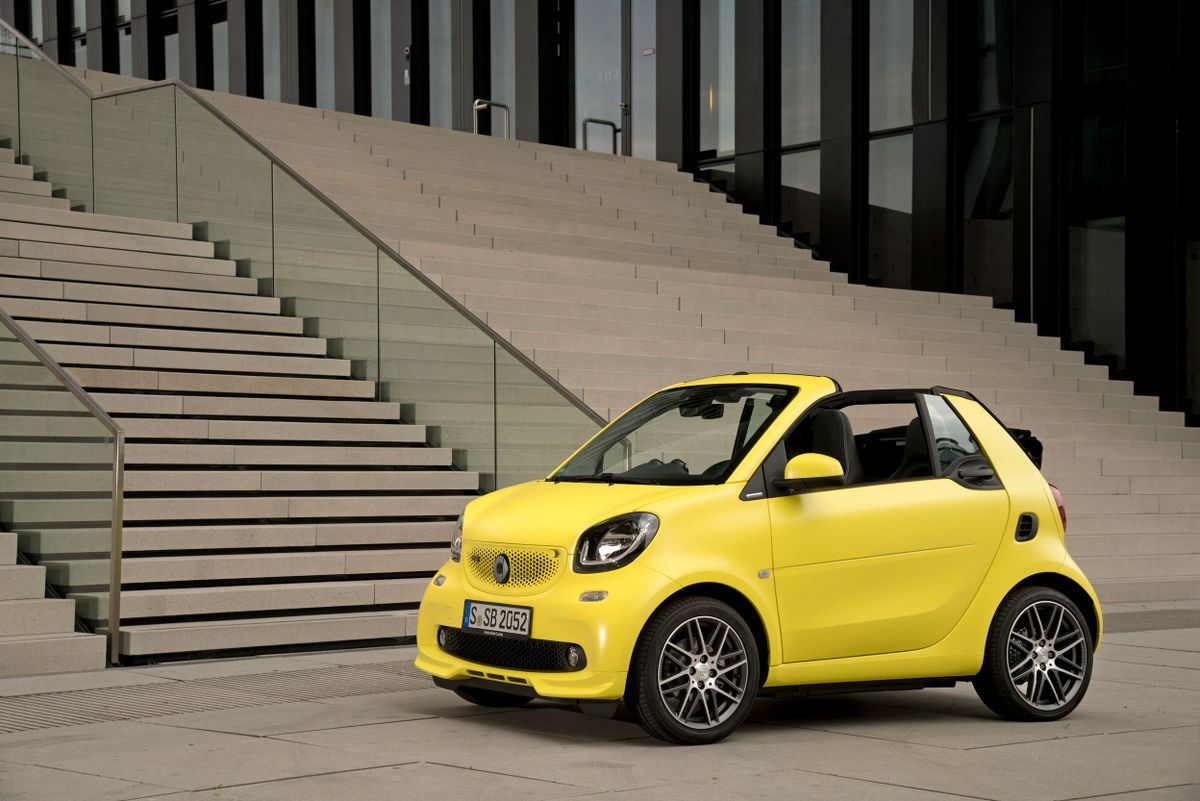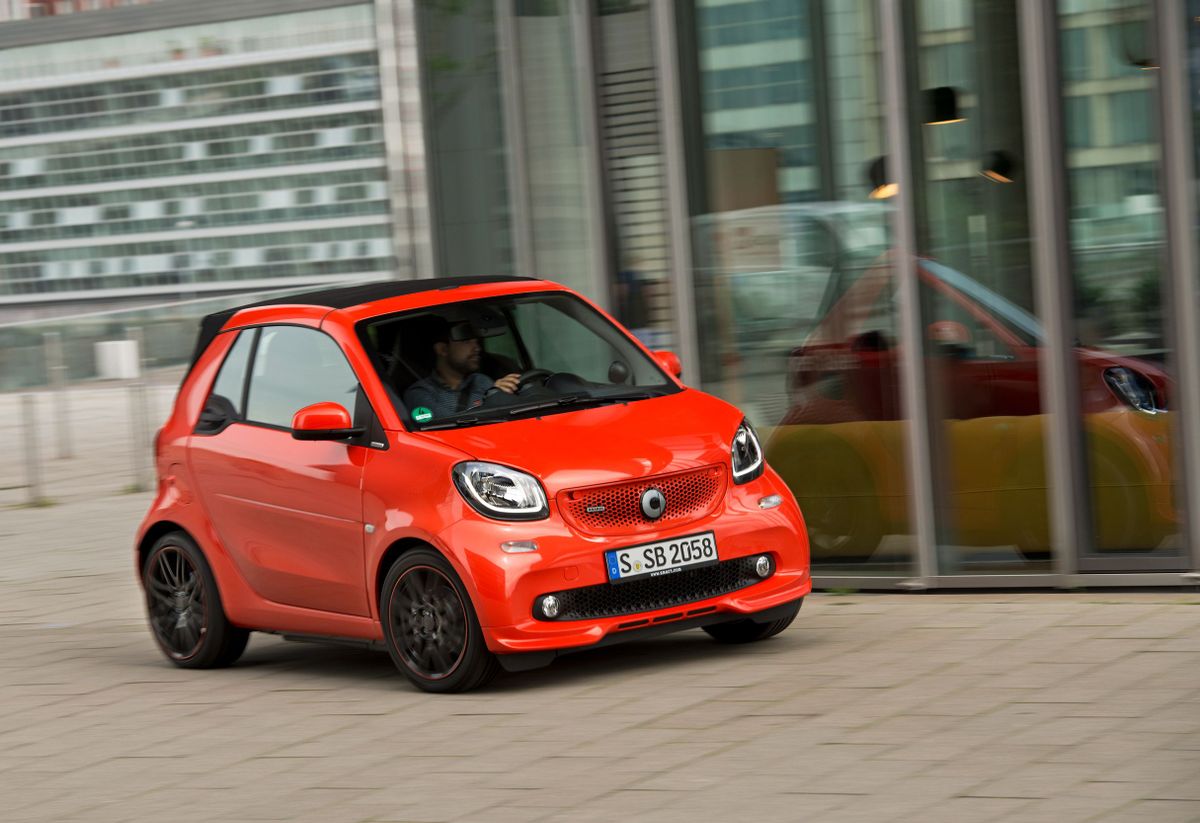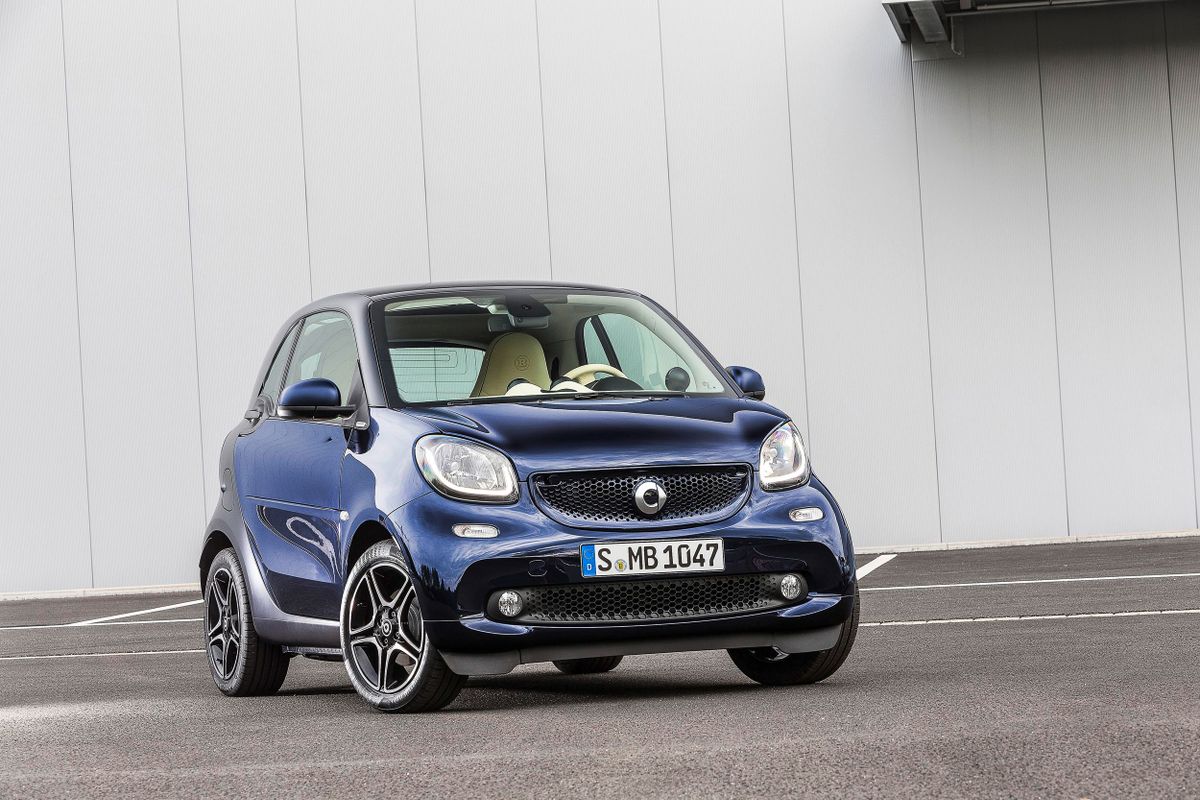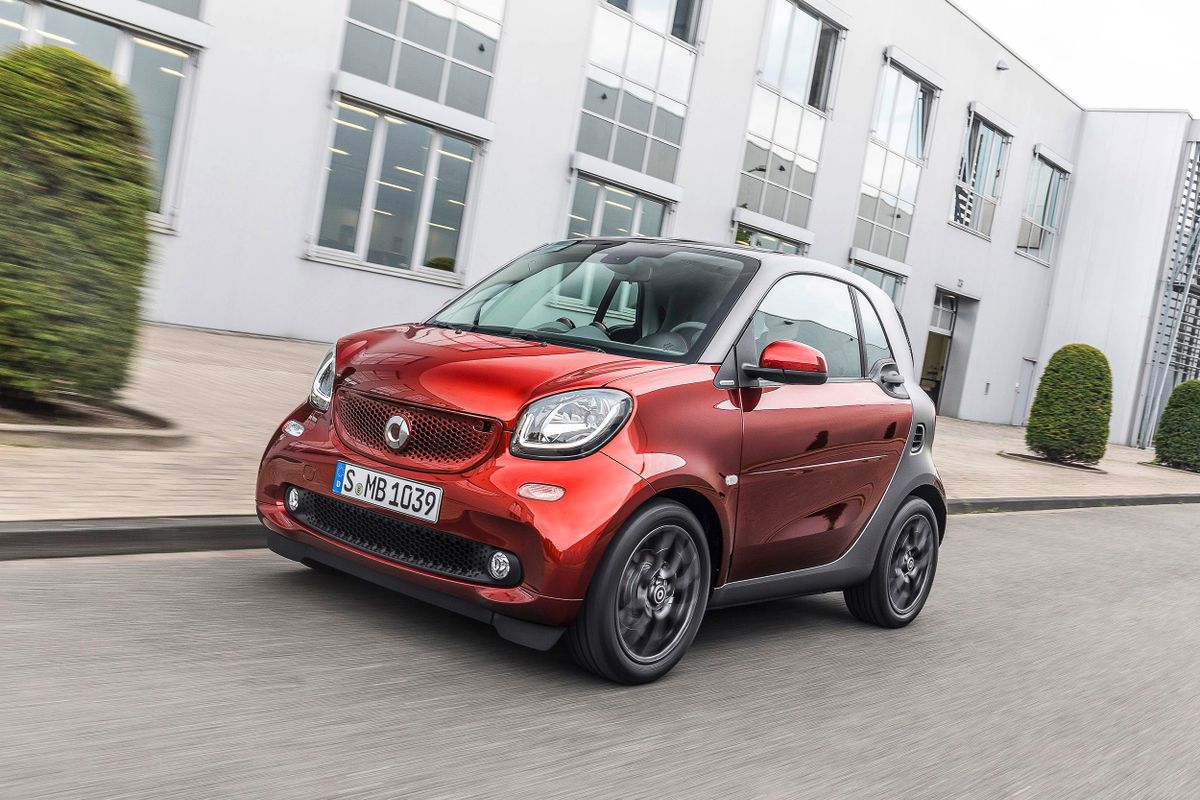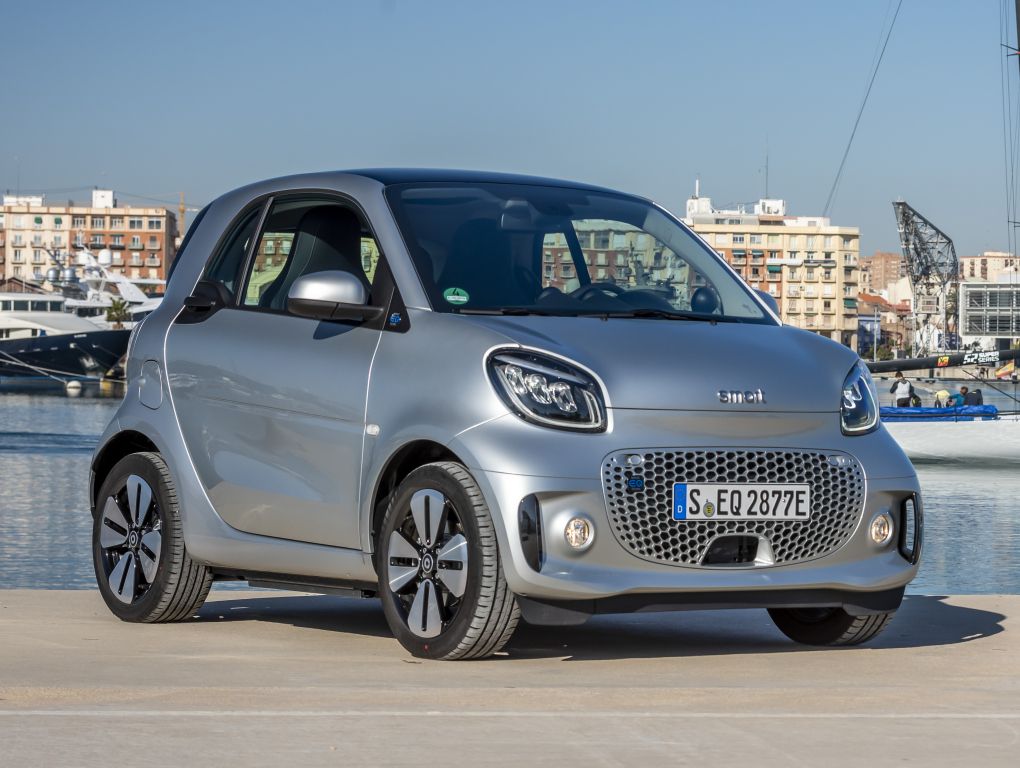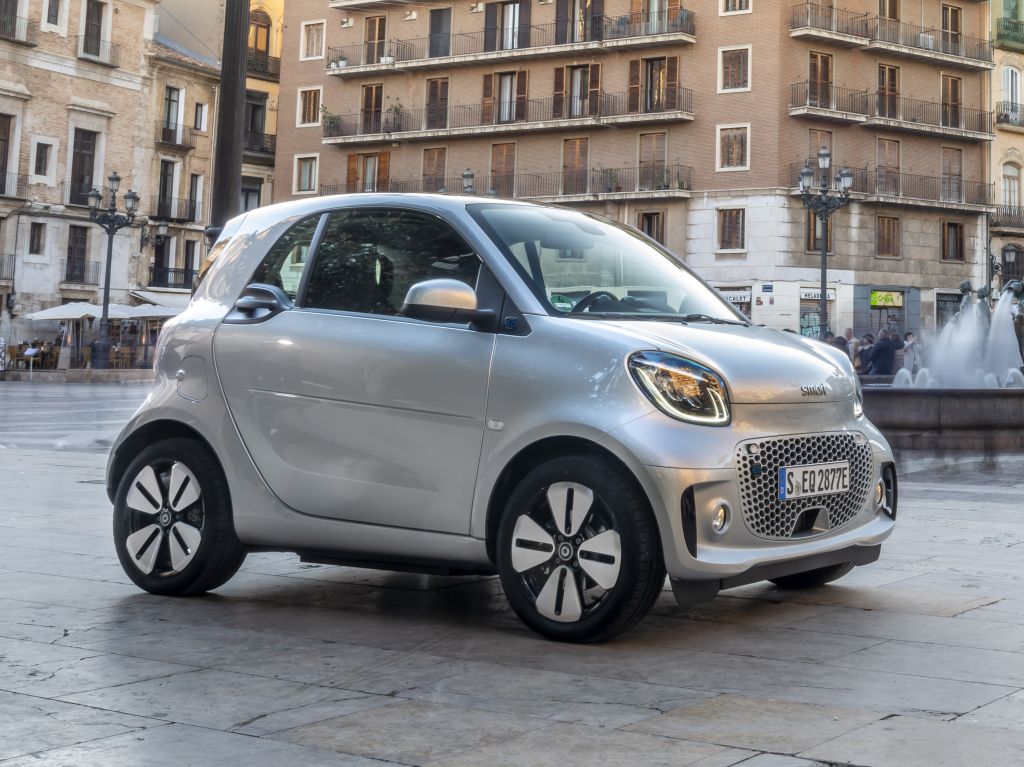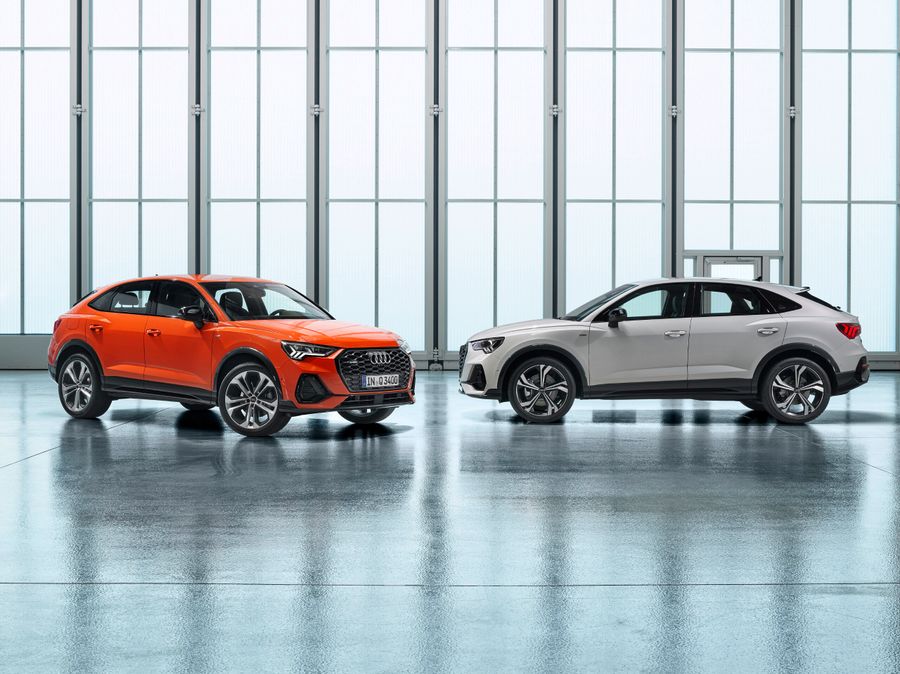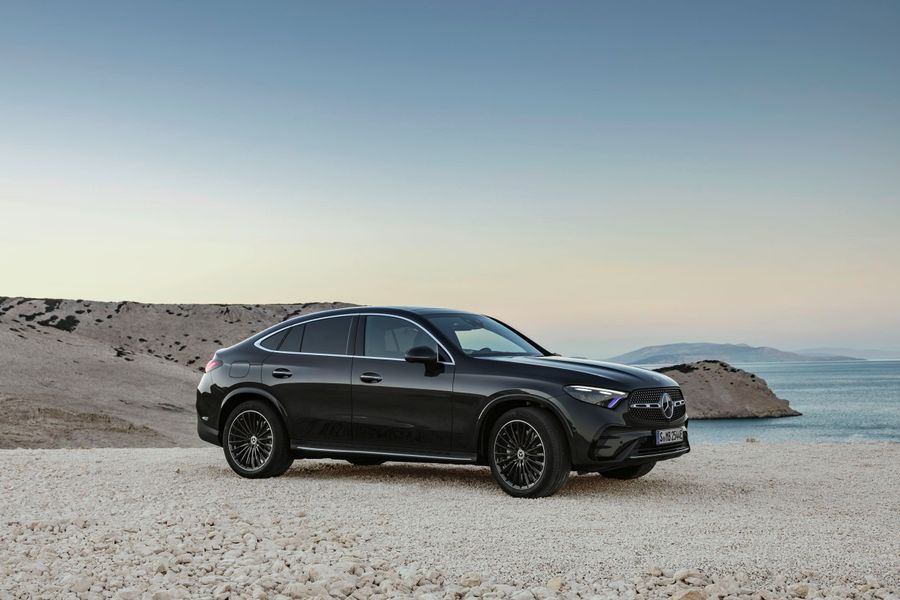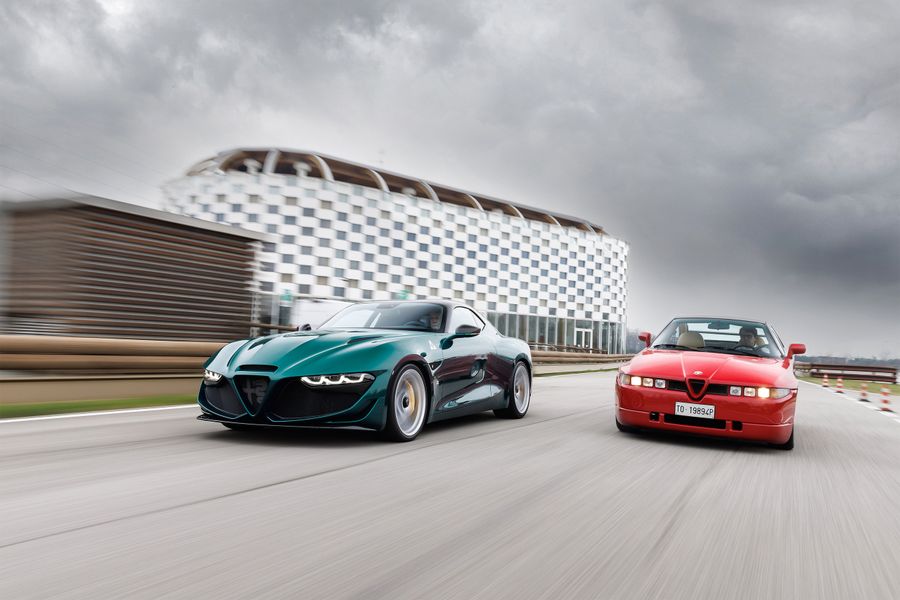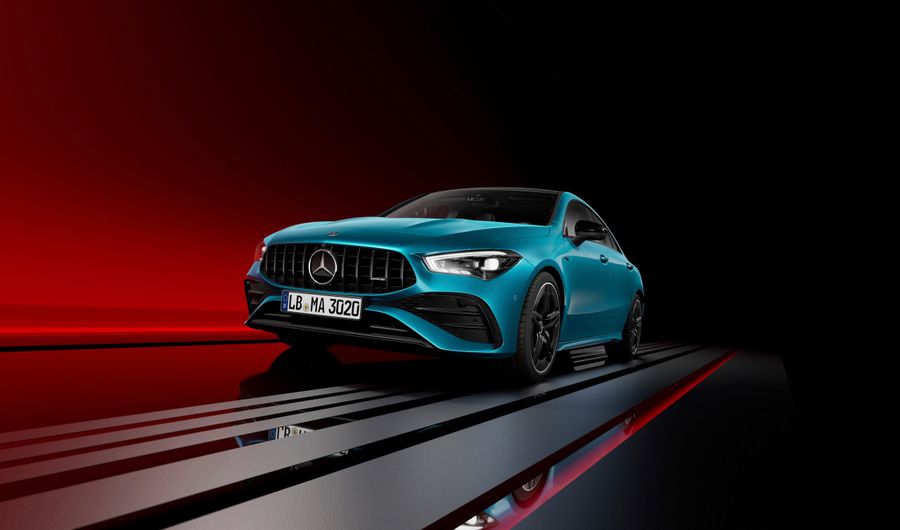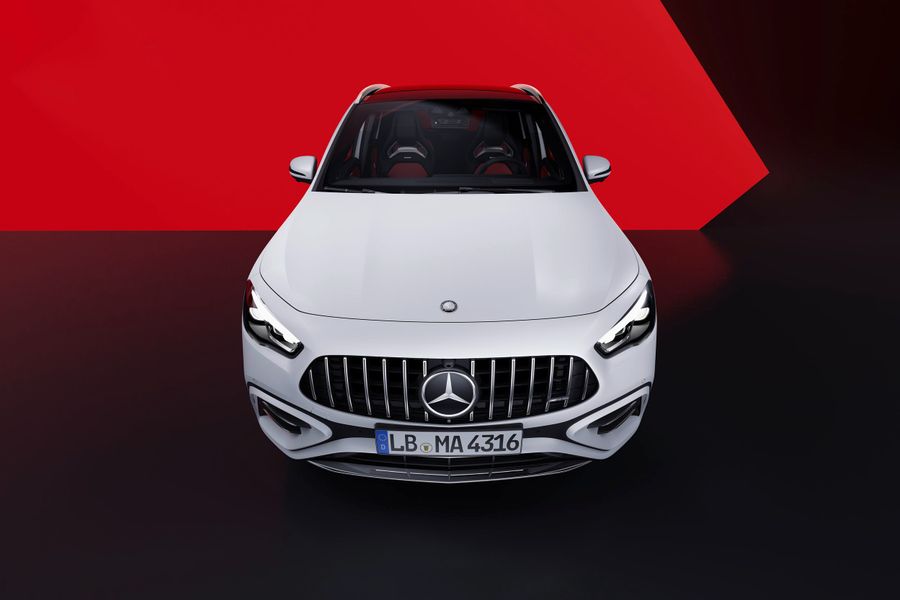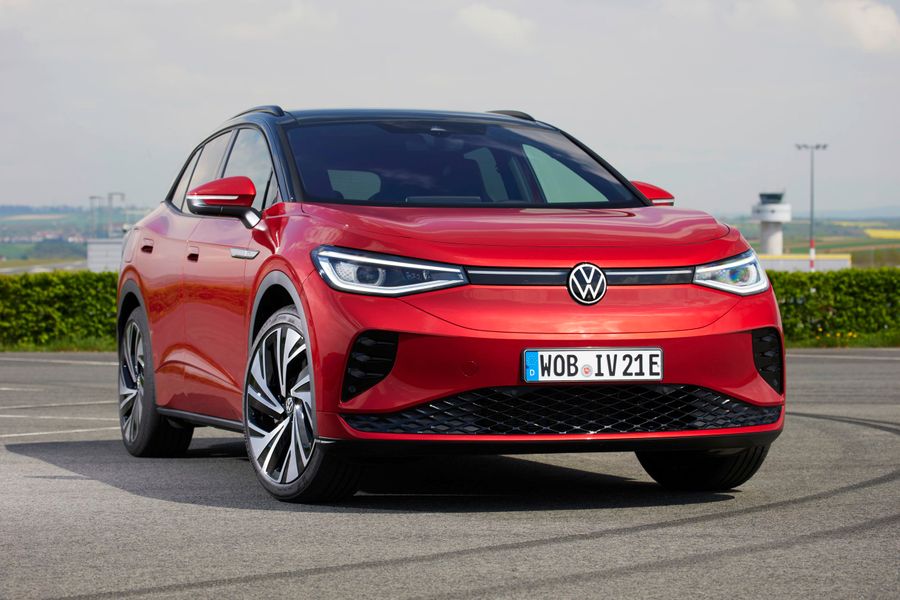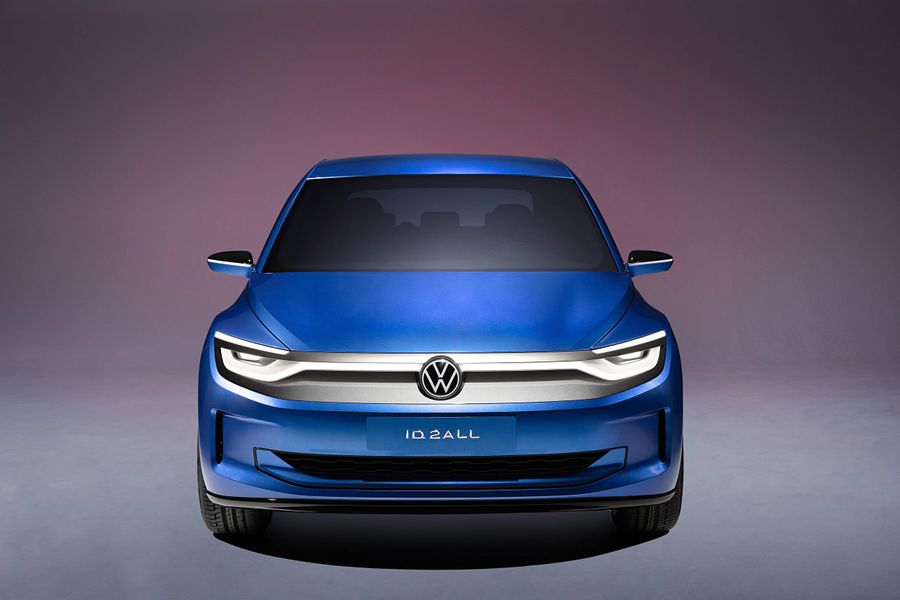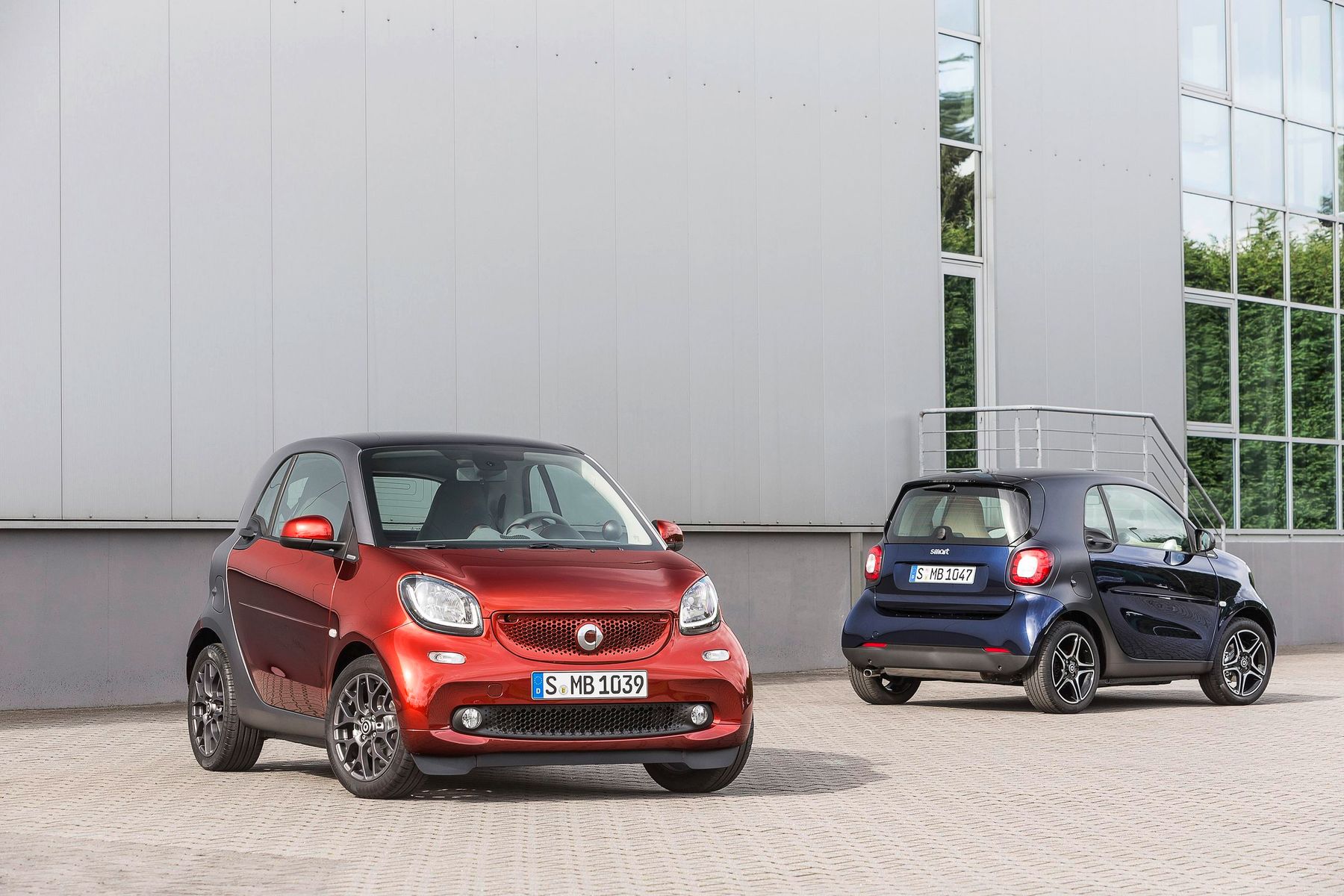
Only for two
The Smart Fortwo is Smart’s two-seater rear-wheel drive hatchback designed specifically for the city. The car has been produced since 1998. The third generation is currently available on the market (as of 2021).
The Pink Panther (2006 remake) featuring Steve Martin and Jean Reno was used as a commercial for the first Smart Fortwo.
The first generation
It was produced from 1998 to 2007 in 3-door hatchback and convertible bodies. The first Smart had a body support framework called ‘Tridion’. Made of high-strength steel, it had a high level of rigidity, longitudinal and transverse reinforcement elements, and crumble zones in the most vulnerable places. Due to this, in the event of a collision, the impact energy was distributed evenly throughout the capsule. The Tridion provided a high level of safety for passengers in the event of a frontal, side or rear collision, as well as in case of rollovers. The capsule was galvanized and painted either black or silver to protect it against corrosion.
Due to the car’s small size (length – 2,500 mm, width – 1,520 mm, height – 1,530 mm), the other car involved in a collision always hit one of the Smart’s wheels. Then the engineers from Daimler AG came up with an original solution, allowing the little car’s suspension to absorb the impact energy and distribute it to the bottom.
The steel frame was supplied with replaceable plastic body panels in several colors with fun names: jack black, mad red and hello yellow. In 1999, the following new colors were added: true blue metallic, aqua orange and aqua green.
The small two-seater car was equipped with a 0.6-liter turbocharged 3-cylinder direct fuel injection engine generating 45 hp. The engine was located at the back and drove the rear wheels. This version was called Pure. There was a more powerful modification producing 55 hp. Its maximum speed reached 135 km/h. It was called Pulse. A third version, Passion, was added to the range in 1999. Plus, there was a 0.8-liter turbocharged 3-cylinder diesel engine with 41 hp. It was the world’s smallest common-rail diesel engine! The car was equipped with a Softouch gearbox with a variable gear ratio and an electric clutch. The 6-speed unit had a fully automatic and manual mode, in which gears were switched by moving the lever back and forth. As an option, it was possible to shift gears using the paddle shifters.
The Tridion provided a high level of safety for passengers in the event of a frontal, side or rear collision, as well as rollover.
The Smart Fortwo is two-seater. The trunk has a volume of 150 liters, reaching 260 liters to the roof and 363 liters with the passenger seat folded down. The standard trim level included power windows, a car radio, a tire puncture repair kit and central locking. Safety features include: ABS, dynamic stabilization system, traction control system, crash manager, safety steering column, airbags for the driver and passenger. The Passion additionally had air conditioning and fog lights.
Since March 1999, a glass roof, a 12V socket, a gas tank cover with a lock, an additional key with a central locking remote control and an emergency stop sign became standard. Options include air conditioning, electrically adjustable mirrors, heated outside mirrors, fog lights, papaya leather trim, heated seats, navigation system, CD changer, cassette or CD holder, alloy wheels, hanging bike rack or skis and winter anti-slip chains.
After the restyling in 2003, there were three 0.7-liter turbocharged petrol direct injection engines generating 50 or 61 hp (versions tuned by Brabus generate 75 hp). With this engine, the Smart models were equipped with both a manual and a semi-automatic transmission. A 0.8-liter diesel engine with 41 hp was also completed with these two types of transmissions. In addition to Brabus, there were three trim levels: Pure, Pulse and Passion.
The second generation
It was produced from 2006 to 2015 with an open body (convertible roadster) and as a hatchback. The exterior and interior of the second generation of the urban little car looked more ‘grown-up’: the car stopped resembling a toy thanks to the large elongated headlights and wide body kits along the bottom of the sides. It was 2,695 mm long, 1,542 mm high and 1,559 mm wide. The wheelbase grew from 1,810 to 1,867 mm.
The Tridion safety capsule, made of high-strength steel, withstood the impact in a frontal collision at speeds up to 80 km/h. In crash tests, the second Smart Fortwo received the highest rating in terms of driver and passenger safety. There were wide-opening doors to facilitate boarding. The trunk grew up to 340 liters. The seats were very comfortable, and the finishing materials comprised leather and durable fabric. As for finishing colors, there were light gray, deep red or black.
All second-generation Smart Fortwo models, except for Electric Drive, which had an electric motor, were equipped with a petrol engine with a micro-hybrid drive or a turbocharged petrol engine. They were supplemented by manual or semi-automatic transmissions. There were three modifications: Pure, Pulse and Passion.
- Pure: This version was equipped with the in-line 3-cylinder micro-hybrid drive engine. When the car was moving in a straight line without maneuvering and the speed dropped below 8 km/h, the micro-hybrid drive independently turned off the engine, after the driver released the brake pedal and pressed on the gas, the micro-hybrid drive started the engine again. This 1.0-liter engine generated 71 hp. On average, the car consumed 4.6 liters in the city and 3.9 liters on the highway. The maximum speed reached 145 km/h, whereas acceleration to 100 km/h occurred in 13.7 seconds.
- Pulse: It was equipped with an 84 hp engine. The maximum speed was the same, and acceleration to 100 km/h occurred faster, in 10.9 seconds. The 98 horsepower engine was installed on the Brabus and Brabus Xclusive versions (from 2012, it started generating 102 hp).
- The Smart Fortwo Electric Drive was equipped with a 40 hp electric motor, which was powered by a 16.5 kW/h lithium-ion battery (after 2012, the power was increased to 17.6 kW/h).
In crash tests, the Smart Fortwo received the highest rating in terms of driver and passenger safety.
All Smart Fortwo city cars in any body and trim level were equipped with vehicle dynamics control, ABS with built-in electronic brake force dispersion, hydraulic brakes and traction control, including a hill start assist. The equipment included: a new audio system with 8 speakers, cruise control and an on-board computer that showed daily mileage, current fuel consumption, etc.
The third generation
It has been produced from 2014 to the present, and was restyled in 2019 (as of 2021). The new Smart Fortwo looks completely new, although its familiar two-tone body paint has not disappeared anywhere. The front face has been modernized. Now it features the radiator grille between the larger diamond-shaped headlights, in which the U-shaped daytime running lights shine.
The size of the new generation of the city car practically does not differ from its predecessor. It is 2,695 mm long and has the wheelbase of 1,873 mm. The body width has increased to 1,660 mm and the height has dropped to 1,550 mm. The trunk has become larger, reaching 260 liters. The new interior features numerous oval and round design elements, a modernized dashboard and a display of the on-board multimedia system placed on a stand.
Initially, the car entered the market with two engines, but a little later it acquired a new engine generating 60 hp. The first engine is a 0.9-liter 3-cylinder unit generating 71 hp. The second engine has a volume of 0.9 liters, turbocharging and power of 90 hp. The car is equipped with a 5-speed manual transmission and a 6-speed Twinamic semi-automatic transmission with two Getrag dry clutches.
The new Smart Fortwo is based on a rear-wheel drive chassis from Renault Twingo. The Tridion bodywork basic structure is stiffer and the suspension has been redesigned. It comprises an independent MacPherson strut at the front and a semi-independent De Dion suspension with new shock absorbers and springs at the rear.
Electric power steering is only available in higher trim levels. All cars have power windows, cruise control, LED daytime running lights, ABS, EBD, ESP and ASR systems, Crosswind Assist, monochrome LCD display, climate control, front airbags, immobilizer, central locking with remote control and standard audio system.
2019 restyling
Since 2020, city cars are only available with an electric drive. The new name is Smart EQ Fortwo. The expensive versions now have LED headlights that ‘know how’ to greet the driver with a small light show when the car is unlocked. The new four-petal taillights are also diode and come as standard. The technical characteristics of all versions are determined by the Renault electric engine with 81 hp and 160 Nm. The 17.6 kWh lithium-ion traction batteries can be charged in six hours from a European mains supply, and the optional 22 kW charger can recharge the battery up to 80% in less than 40 minutes. The drive range is 159 km (measured by NEDC). The car accelerates to 100 km/h in 11.5 s. The new media system with an 8-inch screen has acquired many additional functions.


